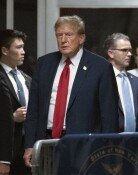Presidential offices belated inspection of KFX plan set by Kim Kwan-jin
Presidential offices belated inspection of KFX plan set by Kim Kwan-jin
Posted October. 01, 2015 22:54,
On widely expected disruptions in the Korea Fighter Experimental (KFX), the largest weapons program since Koreas foundation, the presidential office said on Friday, The office of senior secretary for civil affairs is reviewing issues concerning the KFX program. The KFX program is being implemented in conjunction with the purchase of Lockheed Martins F35A, the next-generation fighter jet fleet, in order to replace aging medium-grade fighter jets that will be retired around 20202025. The Defense Acquisition Program Administration planned to develop KFX by gaining transfer of technologies from Lockheed Martin, but recent parliamentary inspection of the government belatedly revealed that the U.S. government had rejected the transfer of four core technologies including Active Electronically Steered Array (AESA) radar in April this year. It is meaningful that the office of senior presidential secretary for civil affairs is taking the lead in investigating suspicions over the project. It implies that the presidential office recognizes the need to inspect Kim Kwan-jin, the head of the presidential national security office, rather than investigating DAPA alone.
While serving as the Defense Minister, Kim Kwan-jin decided that DAPA would purchase F-35A stealth fighters, which was the single candidate in the FX program to secure Koreas next-generation fighter jet fleet, through the U.S. defense departments Foreign Military Sales (FMS) method, as the chairman of the defense program executive committee on March 24, 2014. It happened even though members of the ruling Saenuri Partys supreme council already requested the committee to change the purchase method to an open bid, claiming that it is impossible to have technology transfer through a private contract from a single bidder. Kim Kwan-jin was also the chairman of the committee when it disqualified the F-15SE from Boeing, which was the lone candidate up until then by citing the lack of stealth function, and decided to take the review process anew on September 24, 2013.
At parliamentary inspection of the government in September 2013 while serving as the defense minister, Kim emphasized that We will select (type of the fighter jet) by taking full responsibility in this mega project that will cost 8.3 trillion won (6.95 billion US dollars) from taxpayers money. Lockheed Martin clarified in its project proposal that transfer of four technologies was not allowed, but DAPA nonetheless signed the contract, anticipating the U.S. governments approval of tech transfer. Controversy erupted at parliamentary inspection of the government due to this issue recently, and we wonder how Kim, the incumbent head of the national security control tower, remains tightlipped.
Chang Myung-jin, head of DAPA, said on Friday, My last face-to-face reporting to President Park Geun-hye happened in March, adding that he did not report in person to the presidential office that the U.S. government did not approve transfer of four core technologies including the AESA radar. Korea should seriously agonize whether it can afford to leave intact DAPA, which was negligent in reporting on a botched contract to purchase high-tech weapons, on top of being under immense public criticism as a hotbed of corruptions in defense procurement.
Due to disruptions in the KFX program, Korea will inevitably have loopholes in its air defense capabilities from 2020. In 2025, the year the government set as the target for its KFX program, both China and Japan will have displayed in combat operation their fifth-generation stealth fighters, which will bring about seismic change in security situation around the Korean Peninsula. The presidential office should get to the bottom of the case to find whether DAPA was negligent in reporting, or Kim covered up despite knowing many things.
Headline News
- Israel prepares for retaliation against Iran
- Samsung reclaims top spot, surpassing Apple in smartphone market
- 77% of Koreans in 20s and 30s are 'Kangaroo Tribe' due to job crisis
- KBO referees embroiled in controversy over ABS decision concealment
- Inflation, oil price surge put double shock on global economy







